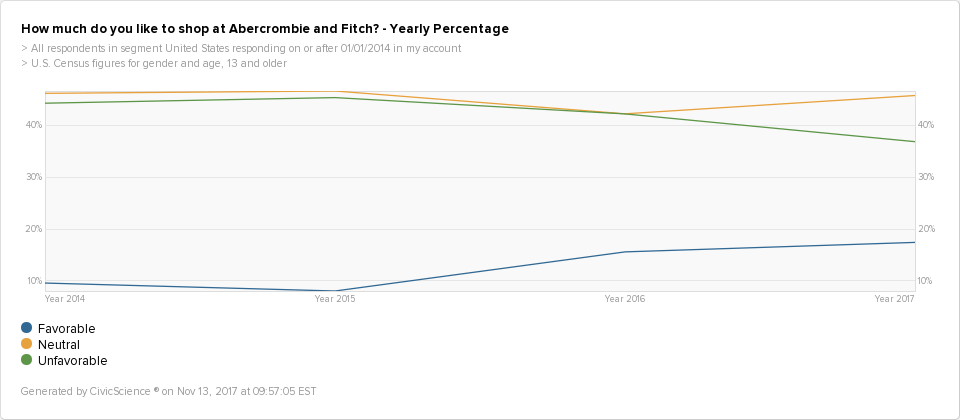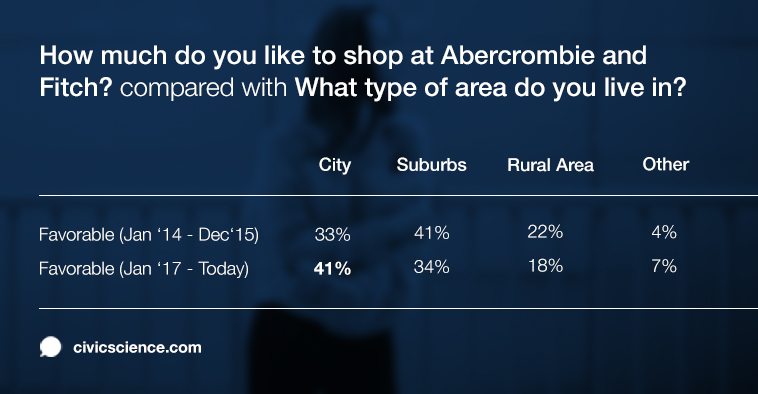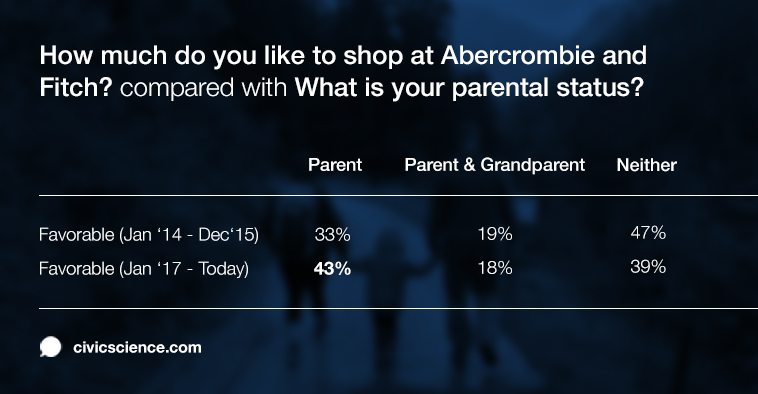The Gist: Abercrombie & Fitch is making major efforts to revamp its image and bring in a different type of consumer. Our data show the strategy may be working among city-dwellers and parents.
Cool just isn’t what it used to be – just ask Abercrombie & Fitch. In my high school days, the infamous Abercrombie & Fitch logo tattooed across the chests of tight, navy shirts signified social standing. The models in the front of the stores drove traffic, and that overpowering storefront smell was a staple of youth.
But, as those kids grew up, and consumer preferences began to change, Abercrombie found a hard time nailing down its brand, audience, and message. What once signified “cool,” a word that is front-of-mind for the company’s CEO, no longer did.
So, it’s no wonder the brand has been making efforts to change its perception among consumers over the past several years.
Though fandom for the brand is relatively low, it seems that since its last brand shift toward the end of 2015, Abercrombie has been making moves in the right direction.
Fandom for Abercrombie & Fitch doubled from 2015 to 2016, perhaps not coincidentally paralleling a new Creative Director and more conservative repertoire.
Just recently, the brand announced another revamp, and even launched its first commercial in over a decade. The ad features Millennials in rustic, conservative clothing while still maintaining that everlasting Abercrombie angst. Apparently, it is trying to broaden its reach to older consumers – shying away from teenage sex appeal.
Admittedly, I saw this commercial in theatres recently, which inspired this write up.
So, from the graph above, we can see that favorability for the brand is improving, but among whom?
ANSWER: URBAN PARENTS
When comparing our data predating 2016 to our data today, we noticed two significant changes in A&F fandom right off the bat.
Before 2016, 33% of Abercrombie fans lived in a city, while now that is 41%. This could possibly illustrate success with the brand’s new marketing strategy, and its new commercial profiling young city-dwellers.
We didn’t find any significant change when it comes to gender, but when it comes to the parental status of fans, take a look at this:
As you can see, 33% of Abercrombie fans were parents before 2016, but as of this year, 43% of Abercrombie fans are now parents. That’s an overall increase of ~30%. This is a very significant and interesting shift, as parents were generally not fans of the old brand. This really does seem to drive the point home that perception of Abercrombie & Fitch is changing.
It’s too early to make any assumptions about what this may mean for Abercrombie, especially given falling in-store sales, but we’ll definitely keep an eye on this revitalizing brand.











